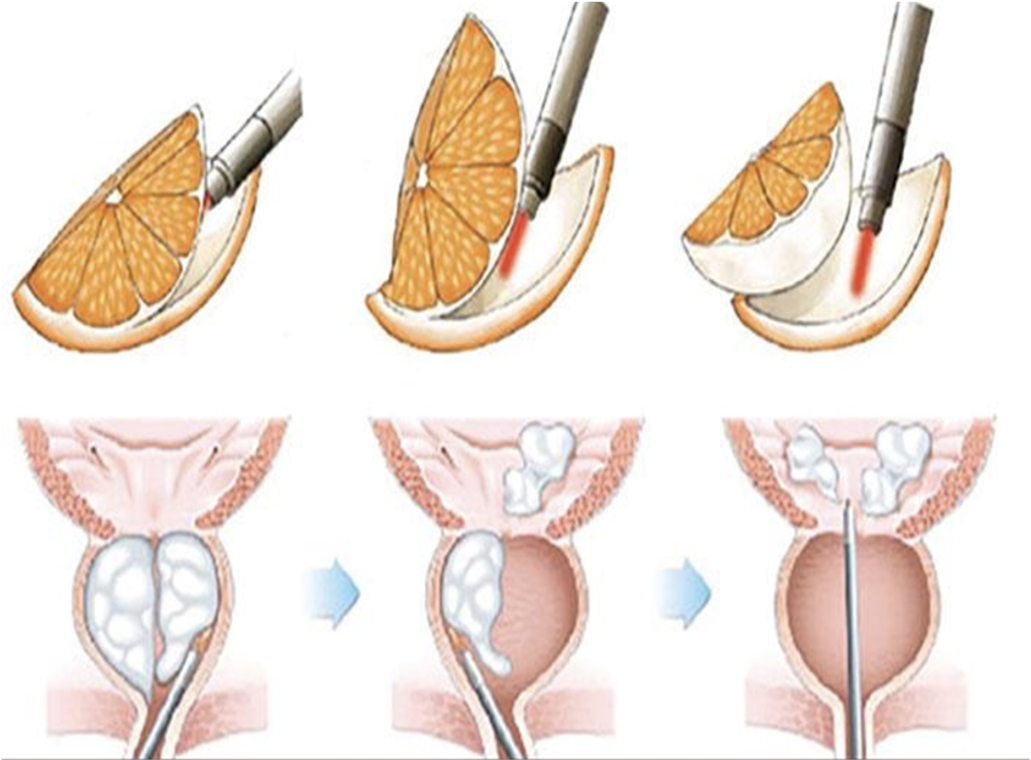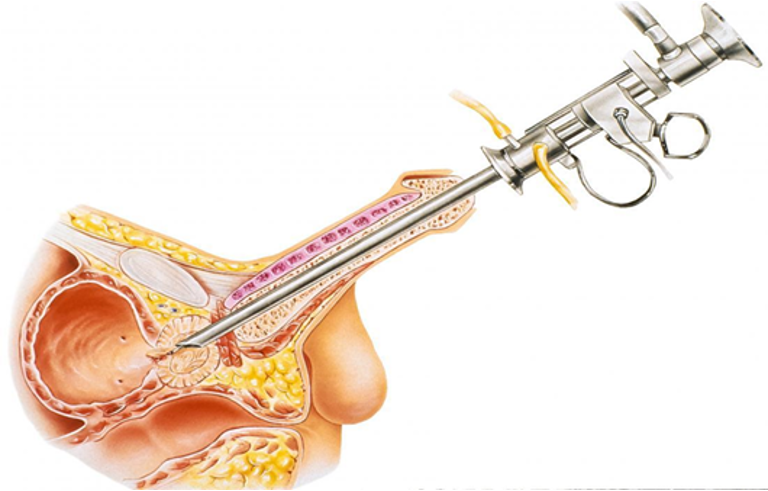What is HoLEP Surgery for BPH?
Holmium Laser Enucleation of the Prostate (HoLEP) surgery is a minimally invasive procedure used to treat symptoms of benign prostatic hyperplasia (BPH). This procedure uses a holmium laser to remove the inner part of the prostate gland, providing relief from symptoms such as difficulty urinating, frequent urination, and a weak urinary flow.
Benefits of HoLEP
HoLEP offers a combination of efficacy, safety, and durability, making it a highly effective treatment option for patients with BPH seeking relief from urinary symptoms and improved quality of life. Here are some of the key benefits of HoLEP:
- Effective Removal of Prostate Tissue: HoLEP is highly effective at removing excess prostate tissue that causes urinary obstruction. Unlike traditional surgical methods like transurethral resection of the prostate (TURP), which involves scraping or cutting tissue, HoLEP involves enucleation. This technique allows for the precise removal of prostate tissue from its capsule, resulting in thorough relief of urinary symptoms.
- Suitable for Large Prostate Glands: HoLEP is ideal for patients with large prostates. It can effectively treat prostates of any size, making it an excellent option for patients with severe symptoms or significantly enlarged prostates that may not be suitable for other treatment modalities.
- Reduced Risk of Bleeding: The laser used in HoLEP effectively seals blood vessels as it cuts through tissue, resulting in minimal bleeding during and after the procedure. This reduced risk of bleeding compared to traditional surgical methods can lead to shorter hospital stays and quicker patient recovery times.
- Improved Urinary Symptoms: HoLEP typically leads to significant improvement in urinary symptoms associated with BPH, such as difficulty urinating, weak urine stream, frequent urination, and the sensation of incomplete bladder emptying. Patients often experience better urine flow and fewer urinary symptoms following the procedure, leading to a better quality of life.
- Lower Risk of Sexual Dysfunction: Compared to some other treatments for BPH, such as transurethral resection of the prostate (TURP), HoLEP has been associated with a lower risk of sexual side effects such as erectile dysfunction. This is because HoLEP preserves the integrity of the prostate's capsule and surrounding structures, reducing the risk of damage to nerves involved in sexual function.
- Minimal Risk of Retrograde Ejaculation: Retrograde ejaculation, where semen enters the bladder instead of exiting through the urethra during ejaculation, is a common side effect of many BPH treatments. However, HoLEP has been associated with a lower risk of retrograde ejaculation compared to some other treatments, preserving ejaculatory function for many patients.
- Long-Term Durability: Studies have shown that HoLEP's benefits are durable over the long term, with many patients experiencing sustained improvement in urinary symptoms and quality of life for years following the procedure. This long-term durability makes HoLEP an attractive option for patients seeking relief from BPH symptoms.
- Minimal Hospital Stay and Quick Recovery:
Due to the minimally invasive nature of HoLEP and the reduced risk of complications such as bleeding, many patients can be discharged from the hospital within 24 hours after the procedure. The quick recovery time also allows patients to resume normal activities sooner than traditional surgical methods.


Risks of HoLEP
While HoLEP is generally considered safe and effective for treating BPH, like any surgical procedure, it carries certain risks and potential complications. Patients must be aware of these risks and discuss them with their healthcare provider before undergoing the procedure. Here are some of the potential risks associated with HoLEP:
- Bleeding: Although HoLEP is designed to minimise bleeding by sealing blood vessels as the laser cuts through tissue, there is still a risk of bleeding during and after the procedure. Excessive bleeding may require additional intervention, such as blood transfusion or repeat surgery to control.
- Urinary Tract Infection (UTI): Any invasive procedure involving the urinary tract carries a risk of urinary tract infection. UTIs can cause symptoms such as burning with urination, frequent urination, urgency, and sometimes fever. Most UTIs can be treated with antibiotics, but severe infections may require hospitalisation and intravenous antibiotics.
- Urinary Incontinence: While uncommon, some patients may experience temporary urinary incontinence following HoLEP. This can manifest as difficulty controlling urine flow or leakage. In most cases, urinary incontinence resolves on its own within a few weeks to months after the procedure, but in rare cases, it may persist long-term and require further treatment.
- Retrograde Ejaculation: Retrograde ejaculation, where semen flows backward into the bladder instead of exiting through the urethra during ejaculation, is a common side effect of many BPH treatments, including HoLEP. While it doesn't typically cause any harm, it can lead to infertility and may affect sexual satisfaction for some men.
- Urethral Stricture: In some cases, scar tissue may form in the urethra following HoLEP, narrowing the urethral passage known as urethral stricture. This can cause difficulty urinating and may require additional treatment, such as urethral dilation or surgery, to correct.
- Bladder Neck Contracture: HoLEP can sometimes lead to the development of scar tissue at the bladder neck, resulting in a narrowing or blockage of the opening between the bladder and urethra. This condition, known as bladder neck contracture, can cause urinary retention and may require additional surgical intervention to correct.
- Persistent or Recurrent Symptoms: While HoLEP is highly effective at relieving urinary symptoms associated with BPH, there is a possibility that symptoms may persist or recur over time. This can occur if prostate tissue regrows or if other underlying factors contribute to urinary obstruction.
- Anaesthesia Risks: As with any surgery, there are risks associated with anaesthesia, including allergic reactions, respiratory complications, and cardiovascular events. Patients with certain medical conditions may be at higher risk of anaesthesia-related complications, so discussing these risks with the anaesthesia team before the procedure is essential.
Whilst HoLEP surgery is a highly effective and minimally invasive procedure for treating symptoms of BPH, there remain many treatment options available for an enlarged prostate. Dr Kapil Sethi uses the latest diagnostic tools and treatment options to manage BPH effectively. From lifestyle changes and medications to minimally invasive procedures and surgery, he will customise a plan to meet each patient’s needs.







